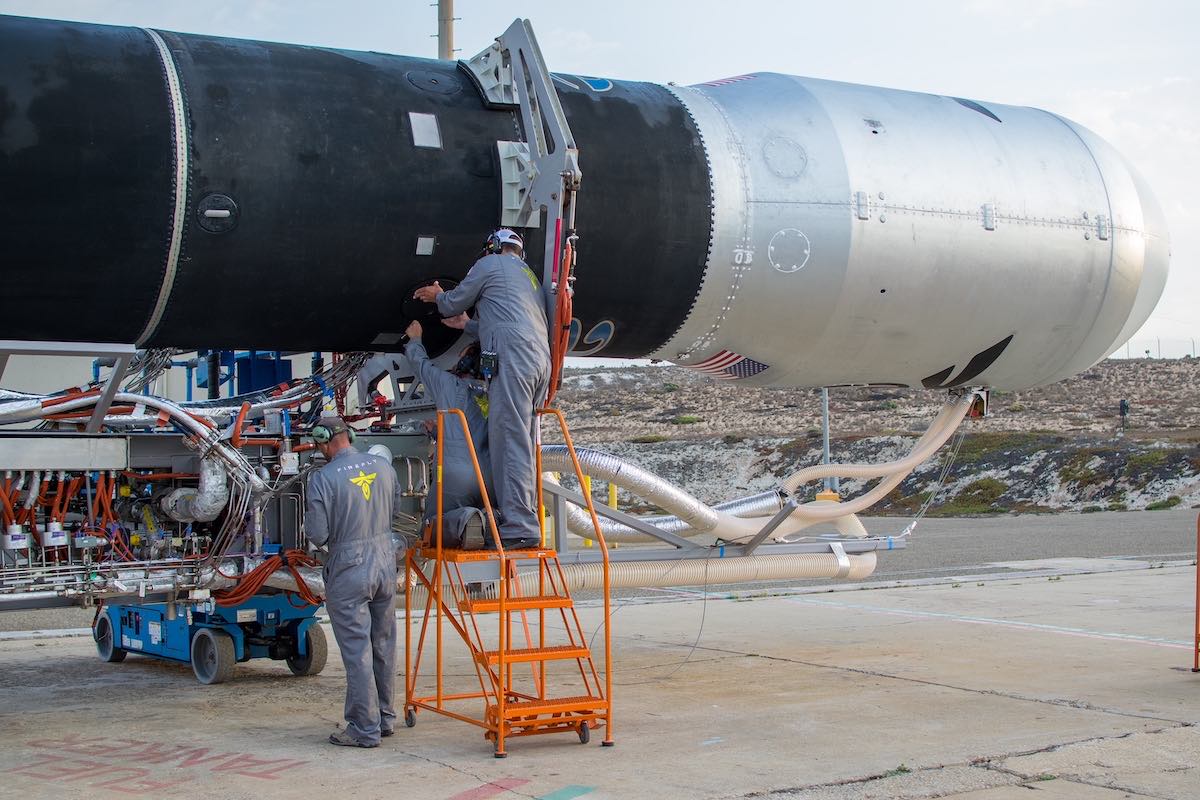Space News & Blog Articles
Firefly reschedules test launch for next week after two scrubs
 Firefly’s launch pad crew works on the Alpha rocket Monday, Sept. 12, at Vandenberg Space Force Base. Credit: Brian Sandoval / Spaceflight Now
Firefly’s launch pad crew works on the Alpha rocket Monday, Sept. 12, at Vandenberg Space Force Base. Credit: Brian Sandoval / Spaceflight Now
Firefly Aerospace said Monday it will try again Sept. 19 to launch its second Alpha rocket from California after scrubbing back-to-back launch attempts due to a helium pressure issue and unfavorable wind conditions.
The Texas-based company is preparing for the second test flight of its Alpha launch vehicle, a nearly 10-story-tall rocket designed to haul small satellites into low Earth orbit. A test launch last year failed when one of its four main engines shut down shortly after liftoff from Vandenberg Space Force Base, California.
Firefly’s second commercial Alpha rocket was scheduled to launch from Vandenberg on Sunday, but the launch team scrubbed the launch attempt to investigate a drop in helium supply pressure to the rocket’s second stage. The company was ready to try again Monday, but called off the countdown “due to violation of wind constraints.”
The next launch opportunities for Firefly on the U.S. Space Force’s Western Range at Vandenberg will be Sept. 19 and 20, Firefly said. The Alpha rocket will take off from Space Launch Complex 2-West at Vandenberg, the former West Coast home for United Launch Alliance’s now-retired Delta 2 rocket.
The two-stage Alpha rocket is designed to loft up to 2,580 pounds (1,170 kilograms) into a low-altitude orbit, or up to 1,642 pounds (745 kilograms) of payload to a 310-mile-high (500-kilometer) sun-synchronous polar orbit. The Alpha is one of many privately-developed small satellite launchers new to the market.
Four Reaver engines on the first stage will generate more than 165,000 pounds of thrust at maximum power, and a Lightning engine on the second stage will produce more than 15,000 pounds of thrust. The rocket first and second stages measure about 6 feet, or 1.8 meters, in diameter, and the payload fairing is slightly wider at 6.6 feet (2 meters).
Firefly says it expects to sell a dedicated Alpha launch for $15 million per flight.
Firefly says the size of its rocket — which can carry heavier payloads than Rocket Lab’s Electron or Virgin Orbit’s LauncherOne — differentiates it from other prospective launch providers in the smallsat launch market.
For its second demonstration mission, Firefly’s Alpha rocket will attempt to launch on a similar mission profile to the one it was supposed to fly on the failed test flight last year. It will target a 186-mile-high inclined 137 degrees to the equator. The unusual orbit, called a retrograde orbit because the rocket will travel against the Earth’s rotation, will require the Alpha launcher to head southwest over the Pacific Ocean on a track passing just south of Hawaii.
There are seven small CubeSat and “picosatellite” payloads riding on the Alpha rocket for NASA, a non-profit education organization called “Teachers in Space,” and from groups in Spain and Greece.
This email address is being protected from spambots. You need JavaScript enabled to view it. the author.
Follow Stephen Clark on Twitter: @StephenClark1.
When you subscribe to the SpaceZE News Feed, we will send you an e-mail when there are new updates on the site so you wouldn't miss them.

